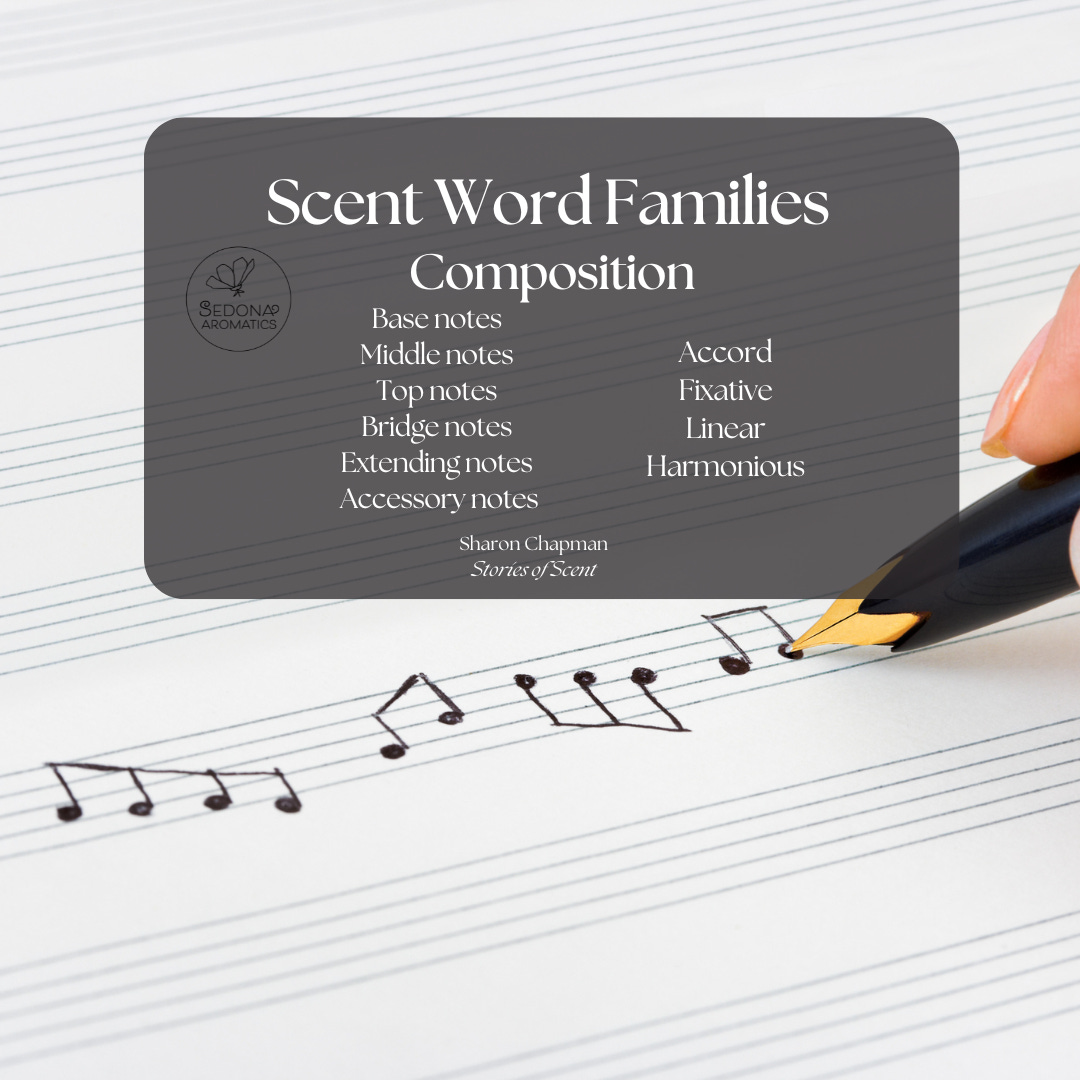Composition: What Does it Mean in Perfumery?
Last week, I introduced you to a new feature relating to scent words: Scent Word Families(TM). Our first scend word family (TM) was perfume performance which included the words sillage, tenacity, impact, and volume.
Scent word families(TM) are those scent words which relate to each other and belong to the same scent word family. This is my own interpretation and grouping of scent words and shouldn’t be confused with fragrance families. I think it makes it easier to understand some of the scent language that we use in fragrance when we can see how they go together. This is the writer in me merging with the perfumer in me!
This week I’m introducing you to perfume composition. Perfume composition collates together all the different types of notes that you’ll find in a perfume. Basically, a perfume masterpiece should blend together like a piece of great music: All of the notes work together on a different level to bring you scent perfection!
We’ve already covered some of these notes including the basic note itself (base, middle, and top) and accessory, but there others that we’ll be looking at in the coming weeks including bridge notes, extending notes, fixative, linear, unfolding and harmonious.
When you understand each type of note and what their purpose is in a fragrance creation, you can start to put together the pieces of the perfume creation puzzle more successfully.
What did you learn from this article? Drop me your thoughts in the comments below.
“Composing is like driving down a foggy road toward a house. Slowly you see more details of the house-the color of the slates and bricks, the shape of the windows. The notes are the bricks and the mortar of the house.”
Benjamin Britten (1913-1976), English composer and conductor






Love the way you present these word and concepts - just at the right time too as I begin to make more natural scent blends xxx
You’ve expressed a lovely way to view scents in a more tangible way. Thank you for sharing.🌸